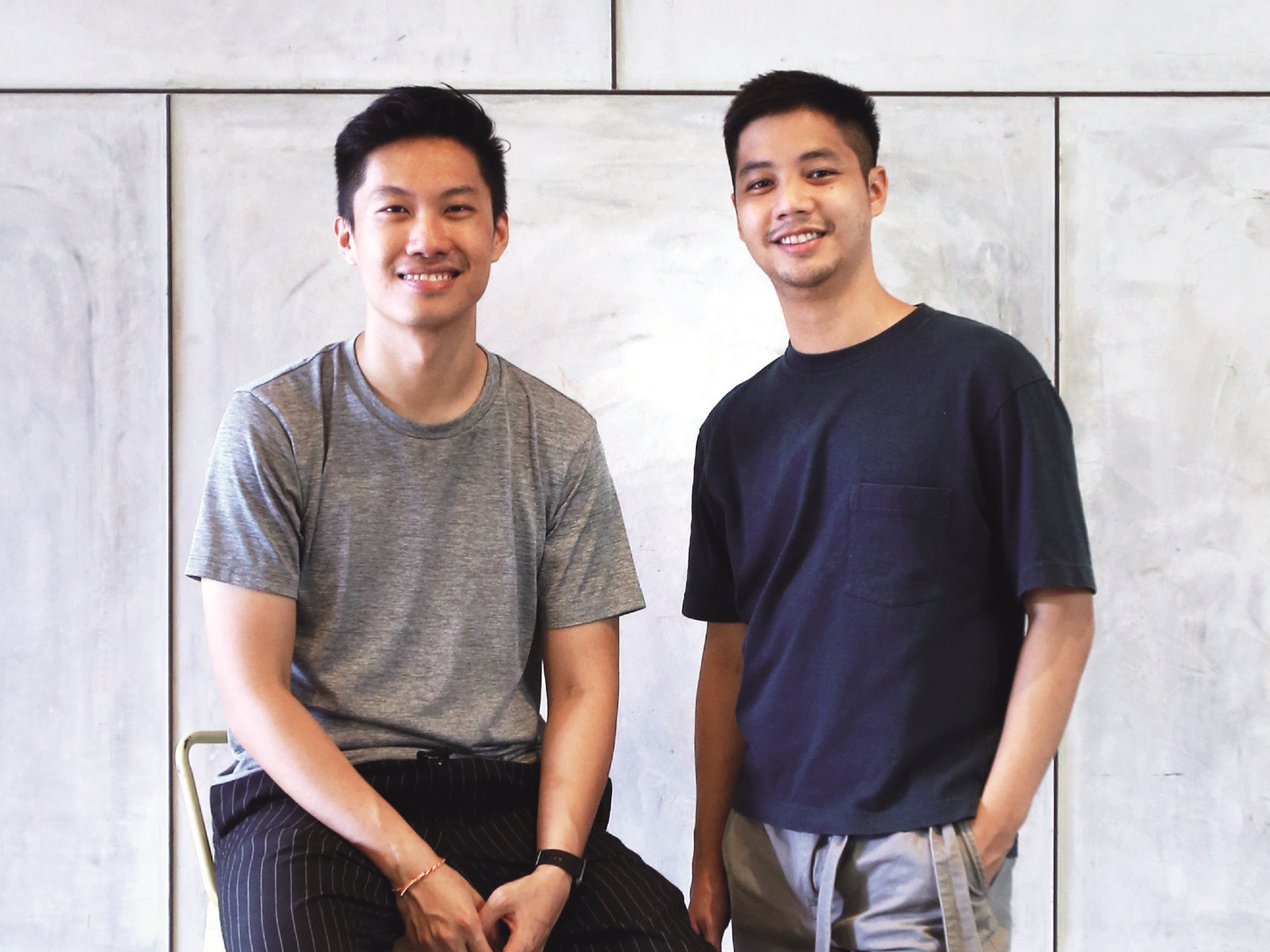
Co-founders Jun (left) and Kyle (Photo: Mohd Izwan Mohd Nazam/ The Edge)
Its name recalls the explosive energy of action bubbles in superhero comics. This is no accident; design collective POW Ideas aspires to bring that same colour and dynamism to its projects, shaping the narrative of everyday stories with excitement or possibility.
A glance at the company’s portfolio affirms this, from the bubblegum-pink walls and David Hockney-esque aesthetics of The Swimming Club at The Kuala Lumpur Journal Hotel to its Gerai Tai Tai installation at the 58th Venice Biennale last year at the invitation of Dutch non-profit organisation GAA Foundation. The 2015 installation, a recipient of the Krishen Jit Astro Fund and initially staged as a pop-up stall at a pasar malam, was an immersion into the myth of fortune telling with customers having their reading interpreted according to the different flavours, textures and colours of served agar-agar.
That is not to say its work lacks heft or gravitas. Other projects include reflexology and tea house Qi Odyssey, the onsen-themed Urban Retreat Spa, boutiques for d.d. Collective and fashion designer Khoon Hooi and the soothing interiors preferred for a general practitioner’s premises at The Red Clinic.
dyp_powideas_kljournalhotel_03.jpg
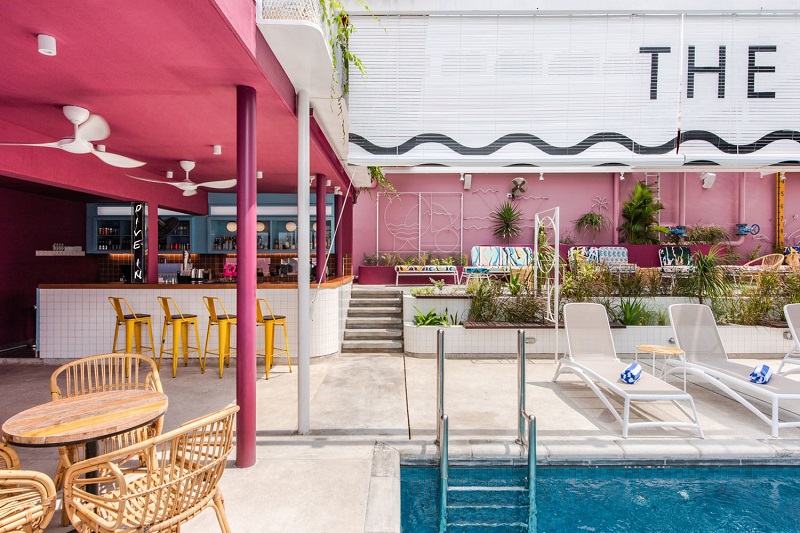
Co-founders Kyle E and Jun Ong were classmates in the architectural programme at Taylor’s University who went on to study in Melbourne and London respectively. Kyle professed an interest in landscape architecture and worked with Ng Sek San before moving to Singapore, while Jun was attracted to the influence of light in space, evinced by a stretch at Tom Dixon. As they pursued their different early career trajectories, their paths crossed only briefly during a stint at Epic Homes, in which they helped the team conceive and test possible design iterations with modular systems.
“I had wanted to be an architect since I was 11. I just decided on it and stuck with it,” says Kyle. “I like seeing beautifully built and designed things. I remember going to the Kuala Lumpur International Airport before it officially opened and being amazed at how one felt walking into the space and knowing it was conceived and created entirely by man. That sealed the deal for me, really. I still think it’s iconic. klia2, on the other hand, is … interesting.”
Jun, meanwhile, found himself drawn towards the creative arts but chose to pursue a more feasible avenue through architecture. “I went down that practical route, and while I see similarities between architecture and the arts, my passion is still very much in things like sculpture, painting and installations. I enjoy the expression of design and form versus functionality. This is probably why we work well together, sometimes contrasting and at other times complementing each other. It is the genesis of POW Ideas,” he says.
“We speak the same language but in different ways,” says Kyle. “We’re both easy-going, bigger-picture people. We don’t sweat the small stuff. We say yes to new ideas and experiences and take it from there.”
merchants-hi-res.jpg
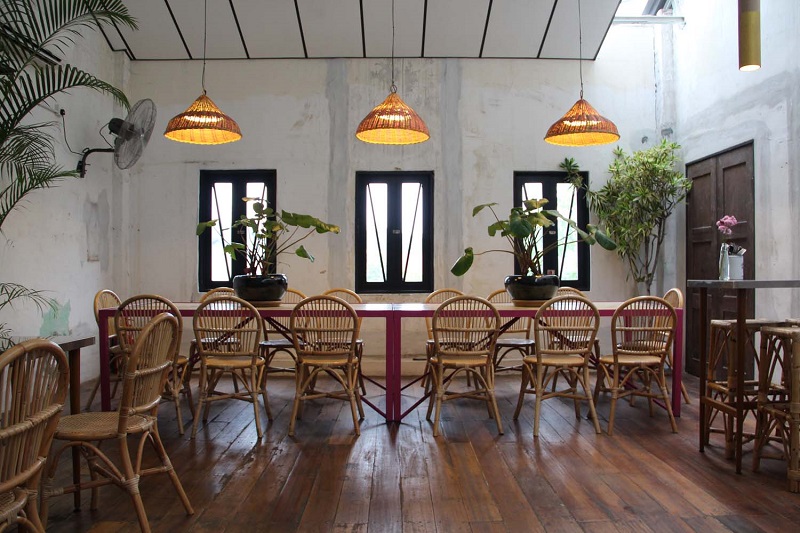
And that is the story of POW Ideas in a single sentence. Jun was sitting in a café in 2014, fresh from his London adventure, when he overheard the owner talking about requiring a designer. He introduced himself and the very next day, went down to the site to have a look at the century-old shophouse that would become the popular brunch spot Merchant’s Lane.
“Back then, the area wasn’t as gentrified as it is now,” he recalls. “It was full of sleepy heritage shophouses, slightly gritty and very interesting. I roped in Kyle. We didn’t have a portfolio but pitched an Oriental theme, which was pretty fresh during that era of industrial aesthetics.”
“He called me one day and said, ‘Hey, do you want to design a café in a former brothel in a 100-year-old building?’” laughs Kyle. “I didn’t need to be asked twice. I was working in Singapore then and was looking to leave. We didn’t even think about establishing a company until the client requested for our invoice. We were having lunch and scribbling potential names on a serviette when we came up with POW. I still have that serviette.”
“We didn’t want to use our initials or first names, so we thought of sounds,” Jun chimes in. The two are clearly tight-knit, almost finishing each other’s sentences in the way one quickly picks up a point from the other. “We listed all the sounds we could think of — Ah, Ooh, Ee, Wow, Whack, Wham, Bam — but POW resonated. It sounded like pop art, a small punch. And we chose ‘Ideas’ as a suffix, rather than ‘studio’, because we wanted to take inspiration from beyond the design world, even from systems like management and business.”
dyp_pow_hoppers_07-2.jpg
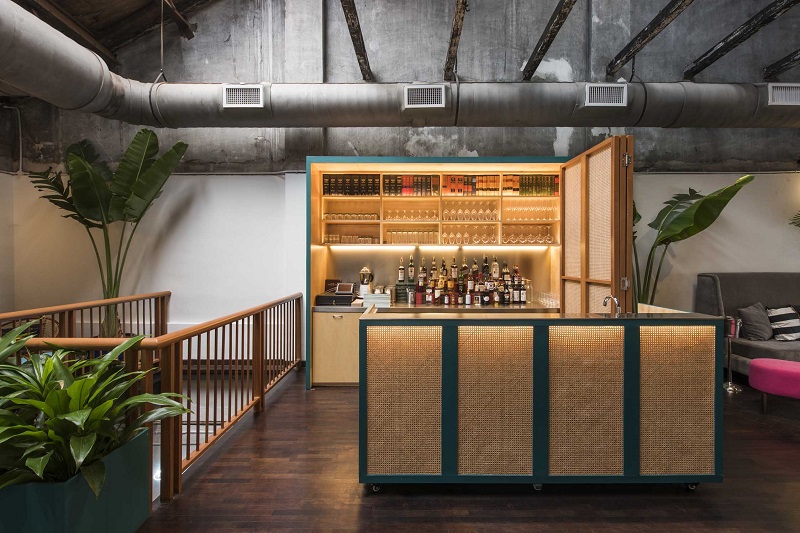
Merchant’s Lane opened many doors for the duo, whose openness to ideas made for outstanding work. The now-defunct Hoppers + Colony restaurant in downtown KL was one of their most interesting briefs.
“Our starting point was literally a peacock feather. We then pulled everything from that idea: the radial shape, the colour palette, everything. But it was never a literal take, the cues are always subtle,” says Kyle.
“We also don’t conform to any specific style. We don’t have a signature look,” continues Jun. “We like that fluidity to shape designs according to the individual nature or personality of each project. Anything that conjures a mood inspires us, be it photographs, movies or music. When we designed Wildflowers, right across the road from Merchant’s Lane [they share the same owners], we intentionally suggested a polarity of aesthetics. The brief was for a refined fusion dining space, so we chose monochromatic colours and plentiful plants — the antithesis of what’s happening in Chinatown right now, where the celebration of heritage is becoming very literal with lantern motifs and the like. Finally, we’re careful to critique designs we’re working on, to ask what’s the pow factor, where’s the kick and the punch.”
Enquiries continued to flood in and the co-founders knew they needed to expand. A chance meeting with Art Printing Works CEO Ee Soon Wei alerted them to co-working space UnionSpace within APW, a former commercial printing factory in Bangsar. They moved out of their first office — Kyle’s kitchen table — to a room slightly larger than a closet, but it imposed a giddy sense of legitimacy. As the team grew to its current size of six, they eventually became absorbed into APW as its in-house architects and now overlook all renovations, expansions and tenant design requests within the grounds.
dyp_powideas_wildflowers_18.jpg
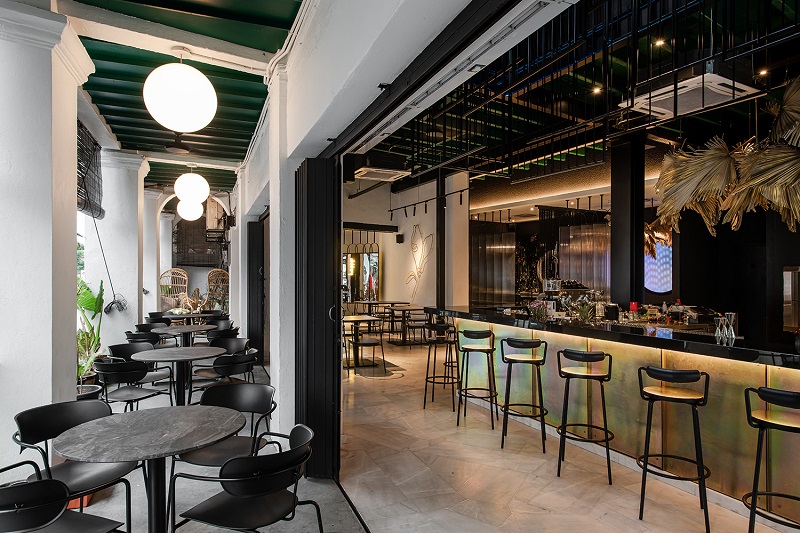
And there is plenty to do. The factories are slowly being converted into lifestyle spaces, from F&B enterprises to other creative ventures. The current atmosphere of uncertainty is generating much conversation about the use of commercial spaces with many entrepreneurs hesitant to invest heavily in bricks and mortar.
“During the Movement Control Order period earlier this year, we interviewed our followers on Instagram to gauge what businesses were going through and their relationship with space,” says Kyle. “Office spaces seem set to shrink, with many of our clients already opting for hot desking or remote work arrangements prior to the pandemic. But we also expect to see retail spaces evolve, especially with the competition from online counterparts. People are looking for novel in-store experiences as incentives, perhaps with great personalisation or exclusivity.”
“Times are difficult now so the newly cleared factory lot at APW could be a testing ground with pop-up stalls or exhibitions,” says Jun. “F&B is also undergoing a revolution with the establishment of cloud or ghost kitchens, which allow businesses to supply food without having to seat customers. We shall see how that changes the landscape.”
We live in interesting times, muses Kyle, who goes on to explain that this pace of transformation is precisely what motivates them to initiate dialogues on ongoing movements and document them for the public. In the eyes of POW Ideas, collaboration — not competition — is the way to grow.
“From the get-go, we have tried to cultivate this environment of solidarity, with no frenemies [a portmanteau of friend and enemy to suggest a friendly façade within a relationship of rivalry],” he says. “We can only push the industry forward by helping each other. Pre-coronavirus, we used to organise talks and conferences with designers from all specialities around the Klang Valley. It started off informally with what we called pow-wow sessions.”
dsc03955.jpg
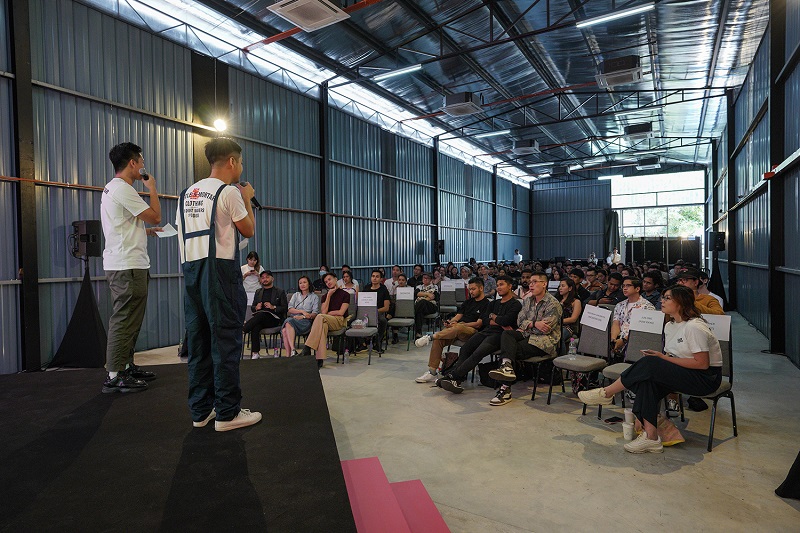
The team at POW Ideas had wanted to get together to watch Abstract, a design documentary series showing on Netflix, in the style of viewing parties popular during the Game of Thrones craze.
“The series — have you seen it? You should check it out, it’s very interesting. It covers eight designers, each from a different field,” says Kyle. “We posted a notice of this on Instagram and people were keen, so it snowballed into a group thing. Then we thought, ‘Hey, we have a friend who designs shoes. If we’re going to watch an episode about shoes, why not have her come in and share her thoughts?’”
And so began the pow-wow sessions, a fortnightly laid-back affair with a few dozen guests in attendance. The interactive platform comprised two parts — a documentary or film screening and a sharing by a speaker on the topic. Past speakers include photographer Nadirah Zakariya, creative director Callen Tham, footwear designer Nelissa Hilman and 3DCG artist Taketo Kobayashi. Right before the lockdown of the local social scene earlier this year, they also pulled off Pow Down, an inaugural design forum centred on the theme of clarity that examined lucidity in the works of speakers Jack Gan (Pestle & Mortar), Adrien Kent and Suek Mei Chai (Studio Kanta), James Won (Enfin by James Won), and Abdul Shakir and Fariz Hanapiah (Filamen). Some 200 people attended the event.
These initiatives led to the Pow Down Podcasts, similar sharing sessions that are recorded for the enjoyment of the wider public. “All these things happened organically but they were very much the direction we wanted to move in,” says Jun. “We have built a very supportive environment with our peers, in which we share information such as supplier contacts, but it has to go beyond the sphere of architecture. We want to bridge the various creative expressions and talents on a unified platform, as a celebration of all ideas and inspiration.”
“When we started POW Ideas, all we wanted to do was survive,” says Kyle. “We had nothing to lose. And now, we have built a substantial portfolio. But we want to do more than just build and design. Malaysia has a large community of incredibly talented creatives and we want to contribute to shaping that scene in any way we can.”
This article first appeared on Dec 7, 2020 in The Edge Malaysia.


